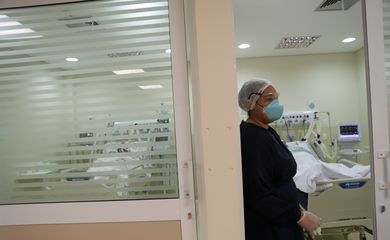CNI: seven out of 10 industries have difficulty buying input

Difficulties in the supply of inputs and raw materials affected an average of 68% of companies in the extractive and construction industries in October 2021, according to a survey by the National Confederation of Industry (CNI), released today (2).

The percentage is lower than in February this year, when 73% of companies reported the problem. "Despite the slight drop, the situation is quite complicated and more than half of the industries assess that this mismatch will only end as of April 2022", informed the CNI.
According to the survey, in 18 of the 25 sectors of the transformation industry consulted, more than two-thirds of the companies stated that, even in negotiations with a higher than usual value, it is more difficult to obtain inputs in the domestic market.
This problem affects 90% of the footwear sector; 88% of leather industries, 85% of furniture manufacturers; 79% of the chemical industry; 78% of apparel and 78% of lumber companies, in addition to 77% of the computer equipment and electronic products industries and 76% of the beverage sector, for example.
imported inputs
Among the sectors that depend on imported inputs, 18 of them also reported the same problem: the difficulty of buying the goods, even if they decided to pay more for it. The most affected sectors were: pharmaceuticals (88%), electrical machinery and material (86%), clothing (85%), plastic material (84%), cleaning and perfumery (82%), textiles (81%) and furniture ( 80%).
According to the CNI Economic Analysis manager, Marcelo Azevedo, there are at least three explanations for the lack of inputs generated by the crisis caused by the covid-19 pandemic. “There is a hole in industrial production that has not yet been resolved. The [research] Industrial Survey in October showed an adjustment in inventories, it is an important condition, necessary to solve the problem, but it is a first step. And this adjustment still needs to be completed for a series of sectors", explained the economist, in a note.
“In addition, we have the expansion of global demand for a series of products, with countries coming back from the crisis. These factors continue to cause stress in the production lines and the scarcity of various inputs”, he added.
According to Marcelo Azevedo, there is yet another aggravating factor consisting of the high cost of logistics, high price and low quality of containers. “Some countries are looking for alternatives to this problem of inputs, such as developing local suppliers, but it is not something that can be done quickly nor does it depend only on the action of the will, and it involves costs”, he stated.
Construction
According to the CNI, in civil construction the problem worsened between February and October this year. The percentage of builders who said they had difficulty obtaining input and raw material rose from 72% to 75%.
Therefore, the expectation of a scenario of normalization of input supply is a little more pessimistic, compared to the general industry: 88% believe that the normalization of inputs will only occur in 2022 and 9% of companies expect normalization only in 2023. In this segment, of the 27% that import inputs, 80% of them signaled difficulties in accessing imported raw materials.
Text translated using artificial intelligence.



